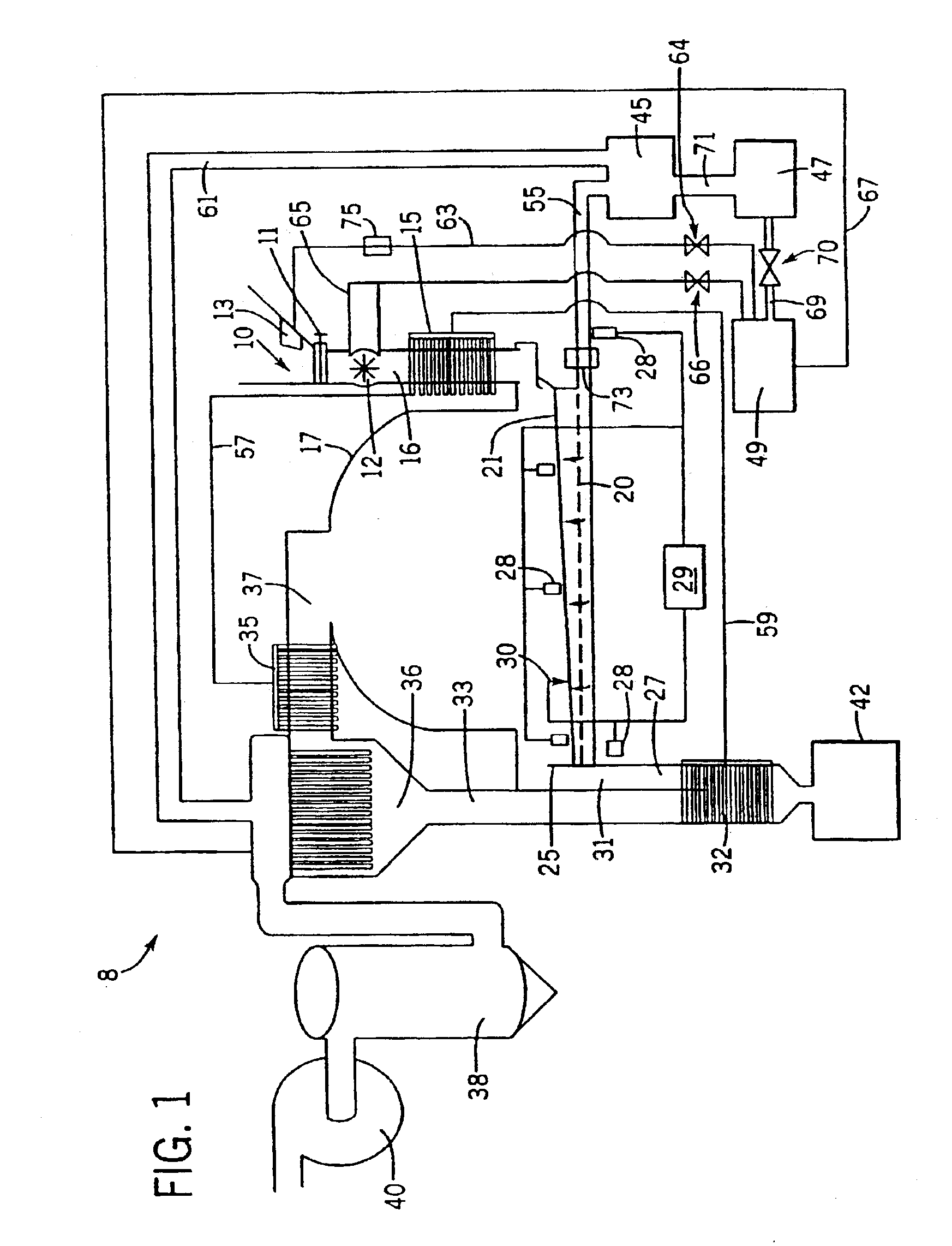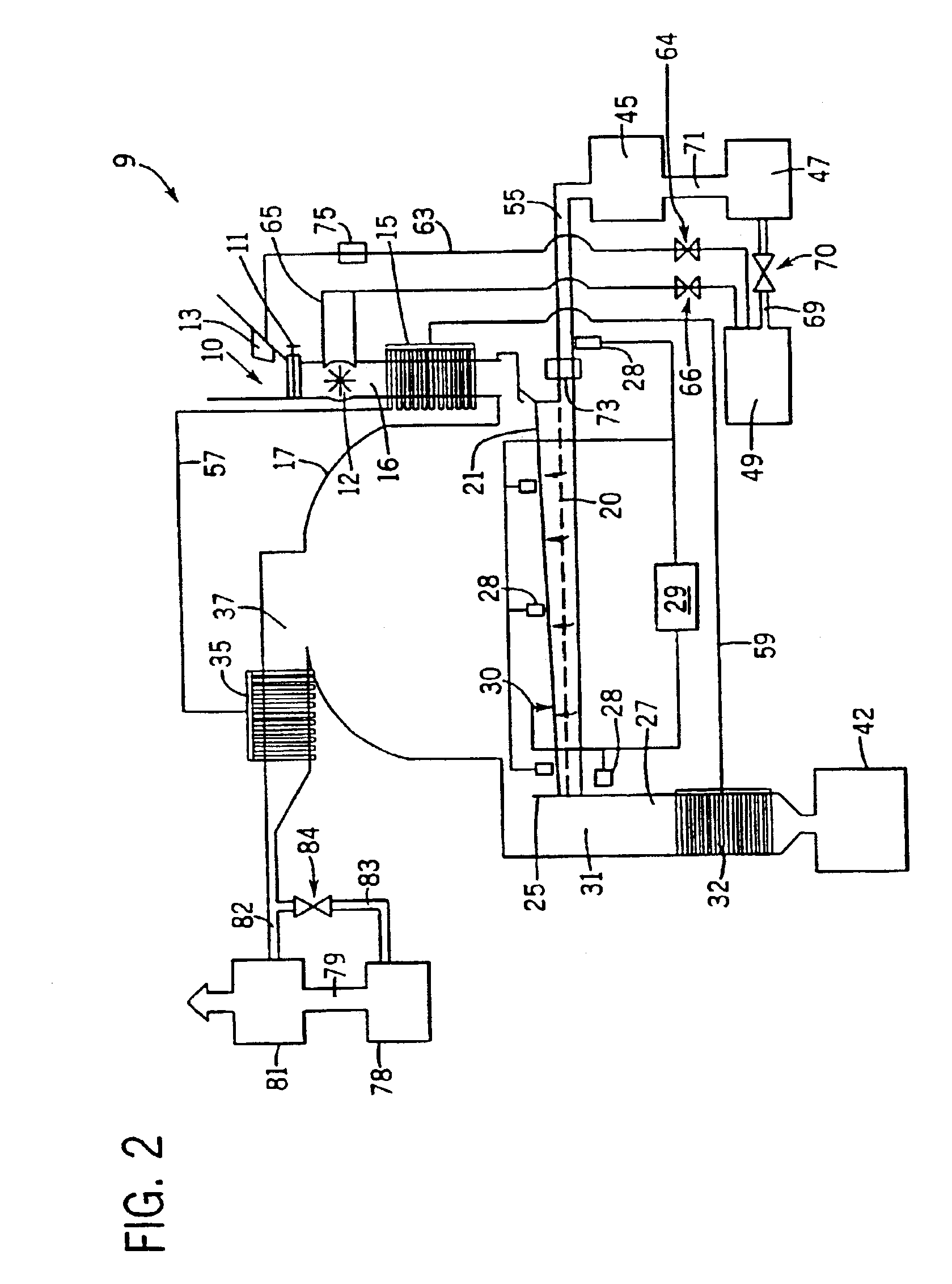Ammonia removal from fly ash
a technology of fly ash and ammonia, which is applied in the field of coal ash treatment, can solve the problems of limiting the use of cost sensitive installations of fly ash, ash that has been treated to reduce nox, and contaminated by unburned carbon or ammonia compounds, and achieves the effect of effective and efficien
- Summary
- Abstract
- Description
- Claims
- Application Information
AI Technical Summary
Benefits of technology
Problems solved by technology
Method used
Image
Examples
example 1
[0035]A sample of ASTM C-618 Class C fly ash containing ammonia was obtained from a coal fired steam generator. The sample of fly ash was measured for ammonia levels and it was determined that the ammonia levels were 51 mg. / kg. The sample of fly ash was also measured for loss on ignition (carbon) levels and it was determined that the loss on ignition (carbon) levels were 0.4%. The sample of fly ash was then continuously heated at 1000° F. (538° C.) until a constant mass was attained and thus no loss on ignition (carbon) remained in the fly ash. The heated sample of fly ash was then measured for ammonia levels and it was determined that the ammonia levels were less than 2 mg. / kg. This test confirmed that both ammonia and loss on ignition (carbon) were removed from the sample of ASTM C-618 Class C fly ash containing ammonia when heated at 1000° F. (538° C.).
example 2
[0036]A sample of ASTM C-618 Class F fly ash containing ammonia was obtained from another coal fired steam generator. The sample of fly ash was measured for ammonia levels and it was determined that the ammonia levels were 170 mg. / kg. The sample of fly ash was also measured for loss on ignition (carbon) levels and it was determined that the loss on ignition (carbon) levels were 2.9%. The sample of fly ash was then continuously heated at 1000° F. (538° C.) until a constant mass was attained and thus no loss on ignition (carbon) remained in the fly ash. The heated sample of fly ash was then measured for ammonia levels and it was determined that the ammonia levels were less than 2 mg. / kg. This test confirmed that both ammonia and loss on ignition (carbon) were removed from the sample of ASTM C-618 Class F fly ash containing ammonia when heated at 1000° F. (538° C.).
PUM
| Property | Measurement | Unit |
|---|---|---|
| temperature | aaaaa | aaaaa |
| temperature | aaaaa | aaaaa |
| specific gravity | aaaaa | aaaaa |
Abstract
Description
Claims
Application Information
 Login to View More
Login to View More - R&D
- Intellectual Property
- Life Sciences
- Materials
- Tech Scout
- Unparalleled Data Quality
- Higher Quality Content
- 60% Fewer Hallucinations
Browse by: Latest US Patents, China's latest patents, Technical Efficacy Thesaurus, Application Domain, Technology Topic, Popular Technical Reports.
© 2025 PatSnap. All rights reserved.Legal|Privacy policy|Modern Slavery Act Transparency Statement|Sitemap|About US| Contact US: help@patsnap.com



